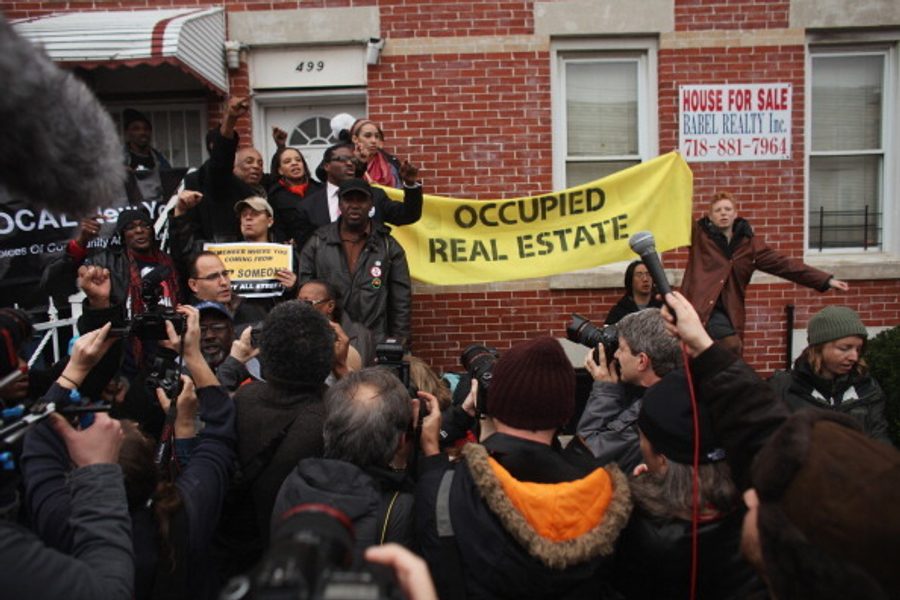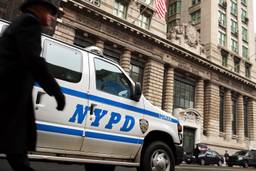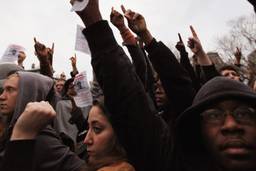
I was having dinner over the weekend with a relative, who innocently asked, “Is Occupy around anymore?” Now that the big camps are gone –Occupy DC, one of the last major camps was raided over the weekend– some individuals erroneously assume the group has disbanded. The truth is that in addition to planning a spring resurgence, many Occupiers are now involved in smaller cells that branched off from the mother movement.
In New York City, Occupy assemblies still meet on the regular outside of the space at Zuccotti Park. These aggregations gather in Sunset Park, Staten Island, East New York, Queens, Harlem, Washington Heights, among other places.
 Sunset Park recently posted a “Spring Is Coming” flyer announcing its own plans for Occupy’s widely publicized May Day actions. The announcement calls for Sunset Park supporters to gather at Trinity Lutheran on Feb. 11 to discuss plans for the OWS relaunch.
Sunset Park recently posted a “Spring Is Coming” flyer announcing its own plans for Occupy’s widely publicized May Day actions. The announcement calls for Sunset Park supporters to gather at Trinity Lutheran on Feb. 11 to discuss plans for the OWS relaunch.
Put simply: the actions never stopped. I once described the movement as having moved underground, but that perhaps lent an unnecessarily nefarious tone to what actually was going on: a temporary dispersal into Occupy subdivisions. Queering OWS, the student movement, and Occupy Homes are three offshoots that have continued to thrive following the raids of the camps.
On Thursday, students, teachers, and their supporters will gather at Brooklyn Technical High School for an action opposing school closures and the privatization of public education.
OWS is hoping that during the spring, student strikes and walkouts will play central roles in the group’s renaissance. After all, it was youths’ involvement in OWS that generated the frenzied energy necessary to motivate thousands of people to sleep outside for months.
The Occupy Our Homes subset also continues to thrive despite the absence of tents at Zuccotti Park, in part because long-time foreclosure-fighting groups such as Vocal NY, O4O, and Take Back the Land are involved with the cause. The banner of “Occupy” has definitely given housing rights proponents a badly needed shot of organizational energy, and also attention by media that has long ignored the rampant epidemic of homelessness.
In California, one such family remained in a foreclosed home after being evicted. Outside, protesters camped as they awaited sheriff’s deputies to arrive any minute to remove the father, Arturo de los Santos, his wife, Magdelena, and their four children.
De los Santos, a 46-year-old Marine, was one of 30 people who took part in the December “National Occupy Homes Day,” a spinoff of the OWS movement designed to spotlight abuses in the mortgage industry.
Addressing protesters and media in December, de los Santos explained that he allegedly qualified for a loan modification program, but the bank foreclosed on his home anyway. At one point in the video, he tells a reporter that he is currently able to make his full mortgage payments, but Chase intends to kick out his family regardless of the fact that the bank has been unable to find a new buyer to purchase the home.
In an interview with CNS, de los Santos said that he was prepared to get arrested to spotlight how “the bank is messing up.”
“We have no choice but to re-evict since no payment has been received on his mortgage for nearly two and a half years,” Freddie Mac spokesman Brad German said in an email. “The house went into foreclosure in November 2010 and was lawfully vacated and secured in July 2011. The only way to recover the losses taxpayers have taken on the unpaid mortgage is to re-secure and sell the house to a new buyer.”
The reality that Chase has been unable to find a new buyer doesn’t seem to distract German from spewing the script.
Having been abandoned by the bank and the government, de los Santos is now relying on the twenty demonstrators stationed inside and outside the three-bedroom home to guard the property.
Peter Kuhns from the Alliance of Californians for Community Empowerment says, “people are hoping the sheriff won’t actually enforce the order.” But added that if the deputies did show up, “everyone is planning on being peaceful. They’re just there to support Arturo.”
The last major arrests in the New York area occurred during a foreclosure auction blockade, a tactic used by groups like O4O for quite a while, but which have just started to garner some national media attention. Footage of protesters singing to disrupt an auction recently appeared on Rachel Maddow’s show.
Visit msnbc.com for breaking news, world news, and news about the economy
In Florida, Occupy groups in Fort Lauderdale, Palm Beach County, and Miami shifted focus to occupying homes to support homeowners caught in the foreclosure crisis.
And these are only the Occupy cells that make the news. Just as certain media outlets declared the extinction of Occupy camps when such sites still exist in less populated areas, the same big city snobbishness sometimes prevents the establishment media from recognizing flourishing activism communities in small towns all across the country.
The foreclosure battle is most prominent in cities because there are more homes and bigger populations, but the resistance is occurring and ongoing at every level in America.




